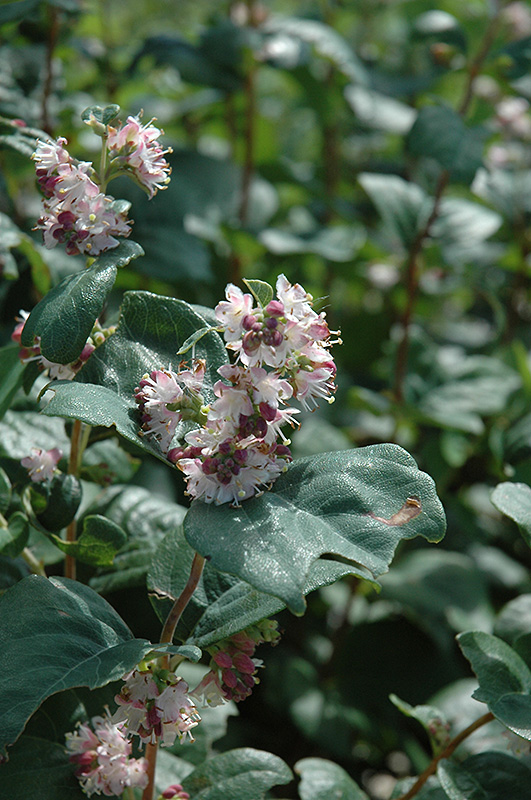How To Grow And Care For A Impatiens Plant
Impatiens are a popular choice for gardeners and landscapers alike. These colorful, low-maintenance plants are known for their ability to brighten up any space with their vibrant blooms. Whether you're planting them in your garden or in a container, following a few simple care tips can help ensure your impatiens thrive. In this post, we'll cover everything you need to know about growing and caring for impatiens. Plant Attributes Impatiens are native to eastern Africa and were first introduced to Europe in the late 19th century. There are over 1,000 species of impatiens, but the most commonly grown variety is Impatiens walleriana. This species is an annual plant that grows up to 12 inches tall and comes in a range of colors including white, pink, red, and purple. In addition to their visually appealing blooms, impatiens are also known for their ability to tolerate shade. This makes them an ideal choice for gardens that receive partial to full shade. Impatiens prefer well-drained soil and thrive in moist, humid conditions. They are also known for their fast growth, which means they may require frequent watering and fertilization during the growing season. Plant Care To ensure your impatiens thrive, it is important to provide them with the care they need. The following tips will help you keep your impatiens healthy and vibrant: - Watering: Impatiens prefer consistently moist soil but can be susceptible to root rot if over-watered. Water your impatiens about once a week, or more frequently if the soil feels dry to the touch. Be sure not to let water accumulate in the plant's saucer, as this can also lead to root rot. - Fertilization: Impatiens benefit from regular fertilization during the growing season. Use a water-soluble fertilizer every 2-3 weeks, or according to the instructions on the product label. Be sure to follow the recommended dosage to avoid over-fertilization. - Pest control: Impatiens are relatively pest-resistant, but they can be susceptible to aphids and spider mites. To control these pests, use a mild insecticidal spray or Neem oil. Be sure to follow the product label instructions carefully to avoid damaging your plants. Pruning Pruning is an important part of impatiens care. Regular pruning can help keep your plants looking neat and tidy, while also promoting healthy growth and blooming. Here are a few tips to keep in mind when pruning your impatiens: - Deadhead regularly: Remove spent blooms regularly to encourage new growth and blooming. - Pinching: To promote bushier growth, pinch back the tips of the stems once the plant reaches about 6 inches in height. - Overgrowth: If your impatiens become leggy or overgrown, prune them back by about one-third to promote new growth and fuller plants. Propagation Impatiens are relatively easy to propagate from cuttings. Here's how to do it: - Take a cutting: Cut a stem from your impatiens that is about 3-4 inches long. - Remove leaves: Remove the leaves from the bottom half of the stem. - Plant in soil: Plant the cutting in a pot filled with moist potting soil. Keep the soil moist and place the pot in a warm, humid location. - Wait for roots: The cutting should root within 2-4 weeks. Once roots have formed, you can transplant the new plant to a larger container or your garden. Potting & Repotting Impatiens are relatively easy to grow in containers. Here are a few tips to keep in mind when potting and repotting your impatiens: - Potting: Choose a container that is the appropriate size for your plant. Fill the container with well-draining potting soil, and plant your impatiens at the same depth it was planted in its previous container. - Repotting: Impatiens should be repotted every 1-2 years, or when the roots outgrow their container. When repotting, choose a container that is one size larger than the previous container. Common Pests & Plant Disease While impatiens are relatively pest-resistant, they can be susceptible to a few common pests and diseases. Here are a few to watch out for: - Aphids: Small, soft-bodied insects that can cause the leaves to curl and yellow. - Spider mites: Tiny, red or brown insects that can cause yellowing and stippling on the leaves. - Powdery mildew: A fungal disease that appears as a white, powdery substance on the leaves. To avoid these pests and diseases, be sure to provide your impatiens with the right care and conditions. Keeping the soil consistently moist, practicing good sanitation, and avoiding overcrowding can all help prevent these issues. Common Problems While impatiens are relatively low-maintenance plants, they can still experience a few common problems. Here are a few to watch out for: - Leaf drop: If your impatiens are dropping leaves, this could be a sign of over-watering, under-watering, or a pest infestation. - Yellowing leaves: Yellowing leaves can be a sign of nutrient deficiency, pest infestation, or disease. Be sure to rule out these possibilities before taking action. - Leggy growth: If your impatiens are growing leggy, this could be a sign of insufficient light. Try moving your plants to a brighter location. In conclusion, impatiens are an excellent choice for gardens or containers. These easy-to-grow plants come in a wide range of colors, and they are known for their ability to tolerate shade. Following the care and maintenance tips laid out above can help ensure your impatiens thrive and continue to bring color and life to your space. Happy planting! 


br.pinterest.com
www.gardenersworld.com
www.pinterest.com




Post a Comment for "How To Grow And Care For A Impatiens Plant"